 By Zach Clark, Director of Advancement at Westminster Christian Academy, St. Louis, MO
By Zach Clark, Director of Advancement at Westminster Christian Academy, St. Louis, MO
The latter half of my childhood, I lived in Arkansas, half a mile from an immense wetland called “The Black Swamp.” This is a vast stretch of thousands of acres of ancient timber springing out of thick mud and deep floodwaters of the local network of rivers. Growing up boating around the Black Swamp hunting and fishing, I learned the hard way how difficult it is to advance to a destination without getting lost. One of the key concepts of traveling, especially in a vast territory of trees and water, is that you have to know where you are going, and how to get there.
This is common sense right? And, what does this have to do with Christian school advancement…what most people refer to as “development” or “fundraising?”
I believe it is time to redefine best practices for development in the Christian school. This could be a call to go “back to basics,” but I find that rather than going back, we need to move forward with a clearer approach that requires disciplined action. For the school leader interested in advancing the organization and the resources needed to fund vision, it is crucial that we know where we are going, and how to get there.
So what is the destination of advancement? I believe that Christian School development is simply the process of helping others see what God is doing in the lives of students and families we serve, and enabling them to have an impact through giving. But, the actual end goal or destination of advancement should be:
Every potential donor engaged face to face in a consistent manner as they develop their vision for having an impact on the future of the Christian school.
Now here’s the problem with this as our final destination, for most Christian schools it is virtually impossible to get there. How could we ever have the human resources to engage every potential donor face to face? While it may not ever be completely achievable, I find it important to keep this end goal in front of us at all times.
So, now that we have clarified our destination, we need to know how to get there or advance in that direction. Dr. Byrle Kynerd, chancellor of Briarwood Christian School, impressed one of my core values upon me. I’ve often heard Dr. Kynerd say,
“How we do what we do is what God uses to bring about change in the lives of people.”
So, I believe that in Christian school development in particular how we do what we do is critically important and matters to God.
Unfortunately, many of the so-called “best practices” applied at Christian schools are simply those typical methods and programs every other organization uses (ministry or not.) While there is certainly no need to recreate tactics just for fun, I do believe that the time has come to apply a new set of best practices that keep in mind the above destination of engaging every person face to face.
Allow me to present several redefined “best-practices” that we are working hard to implement. Each concept is followed by a list of implications resulting from this approach. Each of these has been defined through our own process of thinking through best practices that advance us toward the right destination.
Perpetuate an organizational distaste for programs.
Instead, apply a disciplined approach to engaging people. I believe if you resist programmatic approaches to raising funds, it does help keep the focus on people.
Implications:
1. Reduce the number of or eliminate any events that have fundraising as the goal. Keep only those programs or events that result in engaging people in a stronger understanding of your Christian school. For instance, we now only have one fundraising event, a golf tournament. Our tournament has a proven track record of not only strengthening a sense of community among some of our strongest supporters, but also enabling supporters to engage new and increasing numbers of individuals to learn more about the school. If your event doesn’t accomplish a personal connection and engagement to the mission of the school, get rid of it.
2. Instead of launching new fundraising events, turn the focus of development toward the current events and community builders your Christian school already has in place. Don’t use these events as fundraisers, instead seek opportunities to make these events even more mission appropriate. Make each of these events a place for people to engage more fully in the mission, vision, and values of your school.
Meet people where they are.
Most of us, when trying to raise money, put in place goals, needs, or programs that will surely result in people coming in line and lockstep with our opportunities to give. The problem with this is that as you cast a vision for moving forward in the future, you still have to meet people where they are today. Think of it this way: it is virtually impossible to convince someone to drive you from Alabama to California when they are not convinced that they like you enough to buy more gas money to drive you to the nearest corner. Especially if they are already paying tuition for the pleasure of having you ride in their car.
Implications:
1. We do something completely different. Instead of just telling them where we want to go, we start asking them how to get there. We ask questions. We get input. We do surveys. We do interviews. And, when we think we are doing too much, we find we still have tons of people that haven’t taken the opportunity to give their input, so we keep asking.
2. We pay attention to where they are already engaged in the school. What events do they attend? What do they give money toward? What programs are their children involved in? What are they passionate about? It’s hard to meet someone where they are if you don’t know the answers to these questions.
3. We start providing people with opportunities to impact the Christian school where their heart may be stirred. Will someone give to help you buy a computer, when they are really interested in growing your financial aid? They might give to a degree, but will it be giving that is fueled by a passion for your mission?
Each individual is on his or her own road toward the vision.
This means we stop treating people as if they were all the same. Sure, you have your “groups,” I know. But, does it really make sense to have all your 10th grade families grouped together? Do they all have the same interests? Do they have same commitment level to the school? Can a person really be known and understood just because of the age of their child or the year they graduated? A particular video of Malcolm Gladwell confirmed our thinking on this issue.
Implications:
1. We keep digging deeper down in our efforts to organize and communicate with donors, working toward the dream that each individual would own their own vision to impact the Christian school. We group people in the normal ways: giving, not giving, used to give but don’t anymore, etc. But, we also group them according to: what they are interested in, when during the calendar year they like to give, how they like to be asked, how they like to be thanked, how they like to be reported to.
2. Instead of a constant barrage of requests to give, we take steps toward them. If they don’t respond to ten different requests to give, shouldn’t we find out why? Let’s move closer to them: call them, invite them to coffee, or schedule a tour of the school. Do the hard work and connect with the person, rather than the name on the mailing list.
3. Instead of constantly asking, we constantly thank and highlight results. I find that many people, especially Christian school parents, have a list of other things they do to contribute to the school, outside of giving. We start with the assumption that they already are investors. This means we keep much of our communication focused on thanking people and highlighting the impact of giving. This raises the level of awareness of the importance and impact of giving without wearing them out as quickly.
4. We seek creative ways to structure development around the donor, rather than our needs. If this sounds crazy, consider the example of the scheduling of requests to give. If you learn, overtime or through dialogue, that a family always does their giving during the month of June, no amount of letters sent to them asking them to give during the months of July-March will result in a gift. We should time our efforts, our requests, and our follow-up on what we know about the donor, not what we know about our needs.
There is a difference between doing things the easy way, and the right way.
I know I sound like a curmudgeon, but take a moment to think about this. As a Christian school with major capital campaign ongoing and annual giving goals out in the public eye, we see a lot of promotional materials for seminars and giving programs. It seems that most of the time, these are “easier, faster, better, cheaper” methods to raise funds. Our Head of School received a phone call one time about the “goose that laid the golden egg,” and the caller eagerly shared the news of how our school would see many new funds come our way through this easy approach. In the 21st century it is virtually impossible to calculate all the methods and ideas available for our consideration as we seek to improve and raise more money. The real challenge is how to apply an organizational discipline that will consistently implement the concept of doing the right things, the right way, treating people rightly.
Implications:
1. We apply creativity within a clear framework that honors the principles outlined in this article. This means the challenge is twofold: implementing strategies in a disciplined manner, while at the same time engaging the creative power of our teams in articulating new tactics and methods.
2. We study the implications of new technologies and experiment, but we remember that the need to perfect our ability to engage people face to face doesn’t change. If the tool moves us toward the individual person and enables them to grow in their understanding of who we are as a ministry, then we will consider it.
3. Even as the world changes, our calling to love people will never change. If the program or latest and greatest idea doesn’t demonstrate that we love people and a true desire to see them get involved in what God is doing through the ministry of the Christian school, then it is worthless, at least for us.
 It is hard to find it hard to find time to focus, think, and work on important projects. We are constantly interrupted and distracted. The immediate crowds out the important.
It is hard to find it hard to find time to focus, think, and work on important projects. We are constantly interrupted and distracted. The immediate crowds out the important. 


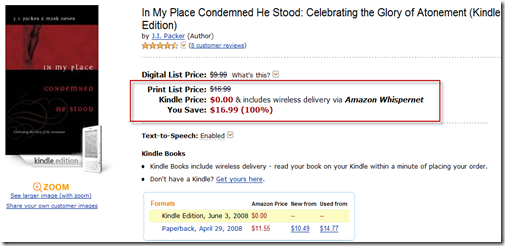
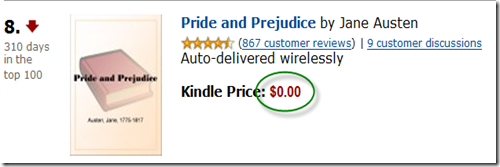

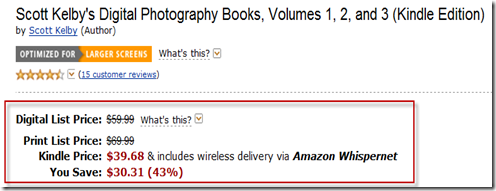
![[EMAIL]](http://s.wsj.net/public/resources/images/TE-AA822A_EMAIL_F_20091008202711.jpg)

 As leaders, we do not want to be caught with our pants down when a new technology explodes on the scene fundamentally changing the way we communicate and interact. IF it is a efficient and cost effective technology we need to know about it before investing limited resources in outdated technologies, irrelevant training, and misaligned infrastructure.
As leaders, we do not want to be caught with our pants down when a new technology explodes on the scene fundamentally changing the way we communicate and interact. IF it is a efficient and cost effective technology we need to know about it before investing limited resources in outdated technologies, irrelevant training, and misaligned infrastructure.  Nevertheless, I also share the conviction that technology, like many good things in our lives, can become an obsession and a cruel master. Any addiction, even to good things, is harmful and unbiblical whether it is sex, food, work, or technology.
Nevertheless, I also share the conviction that technology, like many good things in our lives, can become an obsession and a cruel master. Any addiction, even to good things, is harmful and unbiblical whether it is sex, food, work, or technology.![[SLOWSIDE4]](http://s.wsj.net/public/resources/images/PT-AM329_SLOWSI_D_20090821171915.jpg) ability to know our world, encouraging a further distancing from our bodies and our natures and our communities. We can change this; we have to change it. Of course email is good for many things; that has never been in dispute. But we need to learn to use it far more sparingly, with far less dependency, if we are to gain control of our lives.
ability to know our world, encouraging a further distancing from our bodies and our natures and our communities. We can change this; we have to change it. Of course email is good for many things; that has never been in dispute. But we need to learn to use it far more sparingly, with far less dependency, if we are to gain control of our lives. 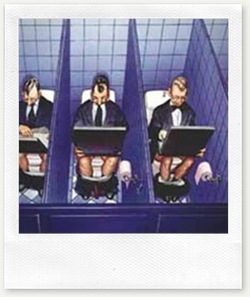 Dr. Barrett Mosbacker, PublisherI have a confession to make—I can be a workaholic. I’m not as bad as depicted in this picture but I have caught myself checking emails on my iPhone in less than appropriate places!
Dr. Barrett Mosbacker, PublisherI have a confession to make—I can be a workaholic. I’m not as bad as depicted in this picture but I have caught myself checking emails on my iPhone in less than appropriate places! For example, in the past I would have missed the simple elegance of the wine bottles and glasses sitting outside a store in Birmingham. I would have walked by with hardly a glance. Instead, I stopped and took a picture. I was surprised by how nice a picture such a simple sidewalk display could make.
For example, in the past I would have missed the simple elegance of the wine bottles and glasses sitting outside a store in Birmingham. I would have walked by with hardly a glance. Instead, I stopped and took a picture. I was surprised by how nice a picture such a simple sidewalk display could make.




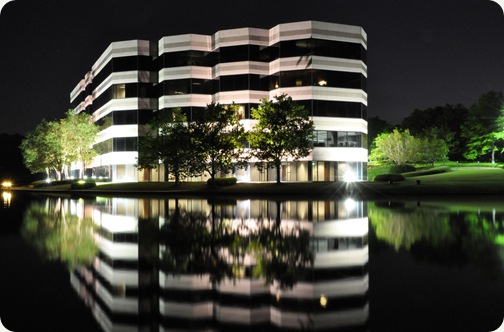


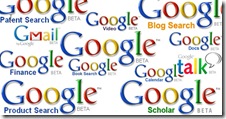 Do you use Google frequently to find information? Would you like to make your searches more efficient and effective?
Do you use Google frequently to find information? Would you like to make your searches more efficient and effective? I am reposting an update on my prior article on Jott. WHY?
I am reposting an update on my prior article on Jott. WHY?  By Zach Clark, Director of Advancement at Westminster Christian Academy, St. Louis, MO
By Zach Clark, Director of Advancement at Westminster Christian Academy, St. Louis, MO